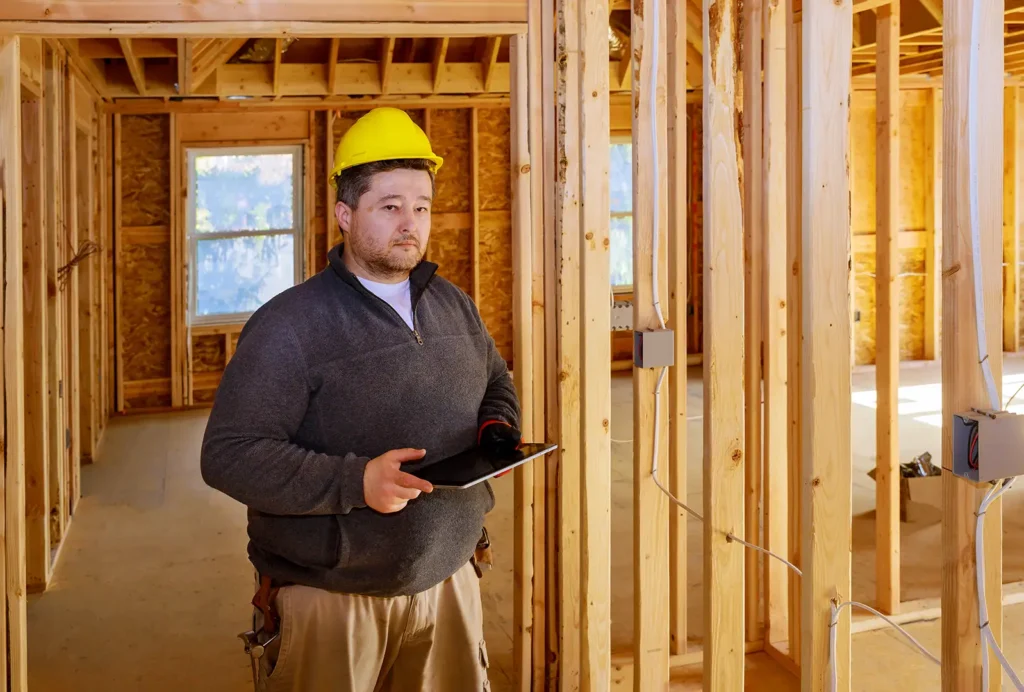Owning a home is a common goal, especially in the sunshine state, where your homestead embodies the American Dream. However, this dream in Florida is often tempered by the harsh realities of its environment – hurricanes, sea level rise, and the persistent challenge of climate change. These factors significantly impact another vital aspect of life in Florida – homeowners insurance.
Understanding the intricate interplay of current trends, market forecasts, and environmental truths acts as a guide for Florida homeowners, insurance professionals, and real estate investors. Amid the array of possibilities, what can Floridians anticipate in their home insurance landscape by 2025 and beyond? What factors should they prioritize when planning ahead?
A Peek at the Present: Home Insurance in Florida Today
To understand the trajectory of homeowners insurance in Florida, it’s essential to scrutinize current conditions and how they are influencing future trends. Here we’ll outline seven critical points that highlight the status quo. These factors collectively paint a comprehensive picture of what Floridians might anticipate as they manage their home insurance needs in the near future.
1. Increased Market Entry of Insurtech Companies
Given the ongoing digital transformation across the insurance industry, more insurtech startups might have entered the Florida market by 2024. These companies often leverage cutting-edge technology like AI and big data analytics to offer personalized policies, more accurate pricing, and streamlined claims processes.
2. Climate Change and Risk Assessment
Florida’s susceptibility to hurricanes and other natural disasters makes it a focal point for observing how insurers adjust to the increasing risks associated with climate change. Enhanced risk assessment models, incorporating more sophisticated climate data, could be more prevalent, potentially affecting premium costs and policy terms.
3. Legislative and Regulatory Efforts to Stabilize the Market
In response to the market’s volatility, there may have been further legislative and regulatory efforts aimed at stabilizing insurance costs and ensuring sufficient coverage availability. This could include measures to encourage competition, manage risk more effectively, and protect consumers against sudden rate increases or non-renewals after natural disasters.
4. Growth in Usage-Based and Customized Insurance Products
The demand for more tailored insurance solutions could lead to the growth of usage-based and customized insurance products. Homeowners might be able to significantly influence their premium rates and coverage options based on proactive risk mitigation measures, such as home improvements to enhance disaster resilience.
5. Focus on Reinsurance to Mitigate Risk
Given the high exposure to catastrophic loss in Florida, insurers might increasingly rely on reinsurance to help manage risk. This could involve innovative reinsurance arrangements or new products designed to protect insurers from the financial impact of widespread disaster claims.
6. Consumer Advocacy for Fair Practices and Rates
With the cost of homeowners insurance being a significant concern for many Florida residents, consumer advocacy groups could play a more prominent role in pushing for fair practices, reasonable rates, and transparency from insurance providers. This might lead to increased consumer education efforts and collaboration with regulators to address market issues.
7. Adaptation to New Building Codes and Resilience Standards
To mitigate the impact of natural disasters, there could be a greater emphasis on adherence to updated building codes and resilience standards. Insurers might offer incentives or lower premiums for homes that meet or exceed these standards, encouraging homeowners to invest in resilience upgrades.

Strategies for Homeowners and Insurers Moving Forward
Technology plays a pivotal role in the evolution of homeowners insurance, particularly in a state like Florida, where unique environmental risks such as hurricanes, floods, and rising sea levels pose significant challenges. Here’s an overview of how technology is shaping the industry and the kinds of policy innovations emerging in response to Florida’s specific needs:
Role of Technology in Homeowners Insurance Evolution:
- Advanced Risk Assessment Models: Insurers are increasingly leveraging sophisticated algorithms and big data analytics to improve risk assessment models. This includes using historical data, weather patterns, and even real-time satellite imagery to better understand and price the risks associated with insuring homes in disaster-prone areas.
- Usage of Drones and AI for Claims Processing: Drones equipped with high-resolution cameras and AI-powered analysis can quickly survey damaged properties post-disaster, speeding up the claims process significantly. This technology allows for more accurate damage assessments and reduces the time homeowners wait for insurance payouts.
- Telematics and IoT for Risk Mitigation: The Internet of Things (IoT) devices, such as smart home sensors and telematics, provide insurers and homeowners with data on potential risks in real time. For instance, water leak detectors can alert homeowners and insurers to potential flooding risks, allowing for swift action to prevent or mitigate damage.
- Blockchain for Transparency and Efficiency: Blockchain technology is being explored for its potential to streamline payment of claims and increase transparency in the underwriting process. By securely automating many aspects of the insurance contract, blockchain can reduce fraud, lower costs, and enhance trust between insurers and policyholders.

Emerging Policy Innovations:
- Parametric Insurance Policies: Unlike traditional insurance that pays out based on assessed damages, parametric policies release funds when specific parameters are met, such as wind speed reaching a certain threshold. This can lead to quicker payouts following disasters, providing immediate financial support to policyholders.
- Customizable Coverage Options: Insurers are developing more flexible policies that allow homeowners to select coverage options tailored to their specific needs and risk profiles. This could include optional add-ons for flood or mold damage, which are particularly relevant in Florida.
- Incentives for Resilience Upgrades: Some insurance companies are offering reduced premiums or rebates for homeowners who make resilience upgrades to their properties, such as hurricane-proof windows, roof straps, or elevated structures. This not only lowers the risk for insurers but also encourages homeowners to invest in disaster-preparedness.
- Increased Use of Excess and Surplus Lines Insurance: Given Florida’s high-risk environment, there’s a growing market for excess and surplus lines insurance, which provides coverage for risks not insurable under standard policies. This includes homes in extremely high-risk flood zones or properties with unique construction.
These technological advancements and policy innovations reflect a broader industry shift towards more personalized, efficient, and risk-sensitive homeowners insurance solutions. Particularly in Florida, where environmental challenges are a constant concern, these developments are crucial in providing homeowners with the protection and peace of mind they need.
Predicting Plausibility: Florida Insurance in 2025 and Beyond
Florida’s unique environmental risks, mainly stemming from hurricanes, floods, and rising sea levels, necessitate continual innovation in homeowners insurance policies. Coupled with projections for the market in 2025 and beyond, and considering the legislative landscape, we can paint a multifaceted picture of future directions and responses within the sector.
Emerging Policy Innovations:
- Climate-Adjusted Pricing Models: Insurers are developing more sophisticated pricing models that account for the increasing risk of climate change, leading to more accurate, risk-based pricing.
- Microinsurance Products: There’s a growing interest in microinsurance policies that offer limited, affordable coverage for specific disasters, catering to those who may not be able to afford or qualify for traditional insurance.
- Integrated Technology Solutions: Policies that integrate with smart home technology, rewarding homeowners for using IoT devices that monitor and mitigate risks (e.g., leak detectors, wind-resistant construction materials) are becoming more prevalent.
- Shared Risk Pools: Considering the high exposure to natural disasters, there may be an increase in shared risk pools among insurers, spreading the financial risk of large-scale disaster events, which could help stabilize the market.
Florida’s Insurance Market in 2025 and Beyond:
The future of Florida’s insurance market, particularly concerning policy costs and market stability, will likely be shaped by several factors:
- Adoption of Advanced Technologies: Continued adoption of technology and data analytics for risk assessment and claims processing could lead to more efficient operations and potentially lower costs.
- Impact of Climate Change: The increasing frequency and severity of storms may lead to higher policy costs as insurers adjust to cover these greater risks.
- Market Entry and Exit: The stability of Florida’s insurance market will be influenced by the ability of the state to attract and retain insurers, especially in light of heightened risk from natural disasters. Legislative and regulatory efforts aimed at making the market more appealing to insurers could impact this.
- Consumer Demand for Flexibility: Increasing demand for customizable and flexible insurance products may drive innovation, potentially offering more options for homeowners but also complicating the pricing landscape.
Legislative Responses:
Legislative actions taken to address challenges in Florida’s insurance market are multifaceted, aiming to strike a balance between protecting homeowners and maintaining a viable insurance industry:
- Reform of Litigation and Claims Processes: Efforts to limit frivolous lawsuits and streamline the claims process can reduce costs for insurers, potentially leading to more stable premiums for consumers.
- Incentives for Risk Mitigation: Legislation may provide incentives for both homeowners and insurers to invest in risk mitigation measures, such as funding for homeowners to make their properties more resistant to natural disasters and incentives for insurers offering favorable terms for such homes.
- Regulatory Support for Innovation: Legislative support for innovative insurance models, including the use of technology in underwriting and claims, parametric insurance, and microinsurance, could help address gaps in coverage.
- Flood Insurance Reform: Given the increasing risk of flooding, both from storm surge and heavy rainfall, there could be significant legislative focus on improving the affordability and availability of flood insurance, possibly through state-supported options or partnerships with private insurers.
The future of Florida’s homeowners insurance market is likely to be characterized by continued innovation in policy offerings, shaped by technological advancements, climate change, and legislative and regulatory efforts to ensure both market stability and consumer protection.
Strategic Planning for Homeowners and Agents
In a state like Florida, where environmental risks are a significant concern, strategic planning and proactive measures are crucial for homeowners, insurance agents, and real estate investors. Here’s how each group can prepare for the future in terms of home insurance and property protection:

For Homeowners:
- Conduct Regular Risk Assessments: Stay informed about the specific risks your property faces, from flooding to hurricanes, and assess your home’s vulnerabilities regularly.
- Invest in Resilience: Upgrade your home with hurricane-resistant windows, reinforced roofing, and other improvements that can withstand severe weather. These investments can lower insurance premiums and reduce potential damage.
- Understand Your Insurance Policy: Be clear on what your policy covers and doesn’t cover, especially regarding flood damage, which is typically not covered under standard homeowners insurance policies in Florida.
- Consider Supplemental Policies: Look into additional policies for flood, windstorm, or other specific coverages. Evaluate the cost versus the potential risk to ensure you’re adequately protected.
- Emergency Preparedness: Develop an emergency plan, including evacuation routes and emergency supplies. Keep important documents, including insurance information, in a safe, easily accessible place.
For Insurance Agents:
- Stay Informed and Educate Clients: Keep abreast of changes in insurance laws, policies, and the market landscape in Florida. Use this knowledge to educate your clients on their options and risks.
- Promote Risk Mitigation: Encourage clients to make resilience upgrades to their properties and explain how these can affect their premiums and long-term risk profile.
- Offer Tailored Solutions: Understand the unique needs of each client and offer customized insurance solutions. This may involve combining traditional policies with supplemental coverages like flood or windstorm insurance.
- Leverage Technology: Utilize technology to provide better service, from drones for property assessments to apps and platforms for easier claim filing and policy management.
- Build Strong Relationships: Establish trust with your clients by being a reliable source of information and support, especially during the claim process following a disaster.
For Real Estate Investors:
- Perform Due Diligence: Before investing, thoroughly evaluate the environmental risks associated with properties. Consider factors like location, construction quality, and historical damage.
- Diversify Investments: Spread your investments across different areas and types of properties to mitigate risks. Don’t put all your resources into high-risk zones without adequate protection and insurance.
- Secure Comprehensive Insurance: Ensure your investment properties are protected with the right mix of insurance policies. This includes not only homeowners insurance but also landlord, flood, and possibly commercial policies for larger investments.
- Engage in Advocacy: Participate in local and state advocacy efforts for better insurance policies and regulations that protect real estate investments and promote market stability.
- Plan for Long-Term Changes: Keep an eye on trends in climate change, market dynamics, and regulatory environments. Adapt your investment strategies to these trends to protect your assets in the long term.
For all parties involved, continuous education, proactive risk management, and strategic planning are key to navigating Florida’s complex insurance landscape and safeguarding their properties against future challenges.
The Florida homeowners insurance market is evolving rapidly, and it’s something everyone – homeowners, insurance agents, and real estate investors – needs to pay attention to. With climate change looming, more natural disasters happening, and regulations shifting, it’s important for all of us to keep up-to-date, take proactive steps to manage risks, and look ahead in our insurance and property protection strategies.
By checking risks regularly, investing in resilience, embracing tech innovations, and pushing for beneficial policies, we can all work together towards a stable future for Florida’s real estate and insurance scenes.
Plan strategically, exchange insights, and unite to tackle upcoming challenges effectively. Together, we can protect our homes, investments, and communities for what lies ahead.






